|
NOTE: This blog references the deaths of two very young children following their interaction with dogs. Some of the content may be disturbing to some readers. Look at the images below of children interacting with dogs. What do you see? Do you see a cuteness overload? These images make me cringe because I see potential danger in the body language of the dogs and the proximity of the children's faces to the dogs' mouths. Two local tragedies related to children does within a period of a week in my area have brought me back to the subject of our unequivocal responsibility to protect dog bite related fatalities. I have written on this subject many times before and believe we just cannot talk about this enough. On February 26, 2024, 4-year old Beau Clark went into a neighbors yard where he was critically injured by a dog. The boy's father tried to intervene and was injured himself. The dog was originally identified by the Morgan County, Alabama Sheriff's Office as a "pit bull." It was later identified as an Olde English Bulldog. The dog was euthanized. The Facebook page for the sheriff's office posted that no charges were filed after the Investigation revealed that:
On March 1, 2024, a 2-year old boy who has not yet been identified entered a fenced yard by opening a gate. He was critically injured by two dogs, a Siberian Husky and a Labrador/Golden Retriever mix, after he was bitten in the face. Details about his prior interaction with the dogs is not yet know. The owner of the dogs (who were taken from the scene by animal control authorities) said they were in their fenced yard, had no prior history of violent or aggressive behavior and had never been out of the yard. He was not home at the time of the incident. Members of the Madison County, Alabama, Sheriff's Office will conduct the investigation into the child's death. These two locations are less than an hour apart. These are compounded tragedies - for the children, for their families, for the owners of the dogs, for the dogs, for the law enforcement community and for the region as a whole. I feel terribly for everyone involved. Local news stations covering these stories have focused mostly on the topic of "aggressive dogs" and what adults can to to keep themselves safe. I saw a story this morning in which a dog trainer was explaining how to use dog repellent spray and how to get into a fetal position to protect your head. I have yet to see any coverage that addresses the issue of keeping children safe around dogs to prevent tragedies like these even though that should be the immediate focus. It is up to all of us to make sure children are safe around dogs - that includes family dogs with whom we share our homes and dogs who belong to others. I've shared information from the CDC and American Veterinary Medical Association about dog bite prevention before but it bears repeating.
The effects of deaths like this are far-reaching and touch even people who do not have children in their home. If you see interaction between a child and dog you feel is unsafe, please intervene before the situation gets out of hand. It is better to anger the dog owner or the adults responsible for the child than to risk serious injury or death. The National Canine Research Council tells us that dog bite related fatalities are extremely rare because they ordinarily are. Not this week in northern Alabama.
0 Comments
I was a good dog. I didn't know what that word meant when I first went to live with my people. I didn't know any of their words and they didn't understand mine. But they were patient and they taught me. I learned their words and they learned my body language I use to communicate. I learned words like sit and stay and come and inside and outside and cookie and ball and "do your business" and no, but I don't hear that word too much. I know I'm a good dog because they tell me all the time. Sometimes they say the word a lot like I'm a good good good dog and they look at me with bright eyes and soft faces and I know they love me. My people spend time with me. We play and run and they make funny noises and they touch me and I feel good. They brush my fur and my teeth and sometimes they kiss my ears. On some days they leave to go someplace and I either rest on my bed in the place where my people sleep or I rest in my room . I like my room because I can see around me and I feel safe there. I can always tell when my people are about to come back by their smell. It's strong when they leave and when it goes away to a certain point, I know that means they will be home soon. They take me out to do my business and to play and then maybe we will go an R-I-D-E. They think I don't know that word when they say it longer but I do. Sometimes we just rest and they watch a box on the wall that sometimes has animals and other dogs. I get excited when I hear dogs barking on the wall box. Sometimes I get special treats. Every day is a good day. Then my life changed. My people came home and a door was open and I saw what I was sure was their R-I-D-E so I ran after it as it went away. I heard my people calling for me but I was sure one of them was leaving again and it was a race so I ran and ran and ran. By the time I stopped I didn't know where I was. I thought I could use smells to find my way home but the sky got wet and I had trouble. A person who was not one of my people yelled at me and told me to go. I little person ran at me and threw things at me. I was so afraid. Later a group of other people surrounded me and tried to catch me but I didn't know them and I was afraid. I ran away and almost got hit by a ride. There was a really loud noise then and so I ran some more. I got so tired. I slept for a long time in some trees and then I smelled and heard a person walking toward me really slowly. He was talking sweet and calm but he was not my person and I could tell he was afraid so I was afraid of him. I lowered my head, tucked my tail and showed my teeth to tell him I was afraid. I let him put a hard thing that was on a long stick around my neck and let him put me in a box on a ride. I thought he might take me to my people. The box smelled like so many other dogs and then when it moved and I could not see, I was more afraid than ever in my life. The person took me to a building and walked me inside with the thing on a long stick around my neck and he put me in a small room. But it was not like my room with my people. It was cold and the floor was wet and I could only see through the front as people talked and walked by. It wasn't as bad as the box that moved on a ride, but I was still so scared. I could smell other dogs but I could not see them. Some barked again and again, people yelled and I had no idea what was happening to me. I tried to tell the people how afraid I was the only way I knew how but they didn't understand me like my people did. Time went by. When the people left each day, they were gone much longer than my people were ever gone. I was in my room so long so that could not hold my business and I felt bad about that. A person came and took me outside one day and I was so happy, because I thought my family had found me and I was leaving the building. I was outside for a little while which was a nice break and made me feel better because I could feel the sun and smell the grass and the trees and see the birds. I finally felt I could relax. Then he went to take me back inside and I was confused. Where were my people? Why did I have to go back into that place that made me afraid? I laid on the ground and tried to make myself as small as possible so the person would not see me, but he did. He dragged me back inside by a leash around my neck and put me back in the room that was wet again. Time went on like this and I got frustrated and sad. People walked by me and dogs barked and I felt so alone and confused. Why did I have to stay in this place? I was a good dog. I stayed in my little room so long that I kept making a mess. I just could not hold it any longer. One day a person came and took me to a different small room. There was a person in there who seemed excited to see me so I was excited to see her. She seemed happy and smiled at me and tried to get me to play with toys. I got closer to her to smell her to see if she smelled like my people. I was going to let her touch me. Before I knew it, she took my face into her hands and put her face right in front of my face. I was afraid she was going to hurt me so growled and I nipped at her to tell her I didn't like that. She yelled and people came into the small room and took me back to my little room. I could tell they were angry as they said no no no no over and over again and told me I was a bad dog. I was upset and more confused and afraid than ever so I laid there and tried to understand what was happening to me. I never felt so alone surrounded by so many people and dogs. After time had passed and the smells of the people were less, a new person came and took me out of the room that smelled like my business. I was happy at first. I thought he was taking me outside or that my family had finally found me. We walked down a hall to a new room and he put me on a table. I could tell he was angry and upset. He would not look at me and he told me he was sorry. I didn't understand that word. He moved some things around on a table and the next thing I knew I was very sleepy. I was a good dog. I shared a poster on my Paws4Change Facebook page last week that got a lot of attention. The message was simple. For reasons I don't know, the post has been shared more than 125,000 times. I see this as a good thing. My hope is that the message resonated with people and it made them think. As is the case with social media and the Internet, this also means the post attracted attention of people who did not agree with my message. I'm used to that and I usually see it as an opportunity to share my views and perhaps educate some people in some ways. I had numerous posts on my page to the effect that behavior euthanasia of shelter dogs is a good and necessary thing, that I was promoting having aggressive dogs adopted out into our communities who could endanger people, that I had no idea how hard people in shelters work and that not all dogs can be saved. These were not comments seeking discussion. I tried to reply to a few, only to have the commenters double down on how clueless, irresponsible and uniformed I am. About half were from people in other countries. I ultimately deleted the most hostile comments and banned the people who made them from my page. I just don't have the time to monitor that type of behavior and even if I did, there was no conversation to be had. These were comments by people who were advocating for the deaths of shelter dogs, most of whom assumed my poster related to aggression when it did not. Dogs are just as apt to be destroyed in animal shelters for failing to make eye contact, for "pancaking," for displays of barrier aggression (which is not actually aggression at all), for being uncooperative or for demonstrating fear-based behaviors which have nothing to do with aggression. I am fully aware that there are some dogs who are genuinely dangerous and cannot be allowed in our communities. As someone who works in the legal field, I've seen the results of dog bite related fatalities by genuinely dangerous dogs and will never be heard promoting the concept of "save them all." I am also fully aware that most dogs who enter shelters, whether they lived inside or outside, whether they were loved completely or simply tolerated, do poorly inside traditional animals shelters and behave in ways which have nothing to do with the behavior they normally display when they are outside the shelter building. I've shared this quote from the National Canine Research Council more times than I can count, but it is a truth we must consider related to every dog who enters an animal shelter. Shelter evaluations may tell us as much or more about the effect of the shelter as they do about the individual dogs. Shelters are noisy, alien environments, filled with strange smells, unfamiliar people, and dogs they may hear, but not see. We should not be surprised that some dogs may. . . behave differently when confined in a shelter, with its barrage of stressors that the dog cannot control, than they will in the safe, secure, predictable environment of a home, cared for by people with whom they are able to form positive attachments. Good dogs die in our tax funded animal shelters every day, across the country. I stand firm in my position that it is never appropriate to end the life of a healthy and treatable dog for behavior created by the conditions in which the dog is housed. For the vast majority of dogs who show fear-based and negative behaviors caused by the shelter environment, those behaviors can be prevented by getting the dog out of the shelter quickly to a rescue group or into a foster home. In those cases when rescue release or foster placement is not readily available, the dog should be treated as if he or she has a critical medical issue and should be cared for using an established protocol to give the dog every opportunity to leave the shelter alive. The least we can do for shelter dogs is to treat them as if they were, or could have been, someone's beloved companion. Because in most cases that's exactly what they were prior to their lives being ended for "behavior." Many dogs destroyed in shelters for "behavior" are very young. Their changing hormones affect how they respond to stress, they have a decreased ability to process information from their environment and they have less control over their behavior related to their frontal cortex (Behavior Vets). Before you presume that all dogs destroyed for "behavior" in shelters somehow deserved that fate, give some thought to how your own dog would behave in a shelter environment which is nothing like the home he or she has known. Do not assume that dogs destroyed for behavior actually did anything serious enough to end their lives. The dog who dies could be your own if you are unable to find your lost dog 1) because you don't know where to look; or 2) because the shelter which houses dogs for your area is open such limited hours that you ability to find your dog is impeded. You can learn more about this issue from the following publications: No Kill Advocacy Center: Animal Evaluation Matrix No Kill Advocacy Center: No Dog Left Behind Willful Ignorance is not Bliss No Dog Left Behind Leave No Dog or Cat Behind - Updated with Studies National Canine Research Council Research Library The story I shared above is fictional, but it is based on an actual dog named Riley. Riley was a young German Shepherd who was taken to a visitation room in a shelter to meet a potential adopter. The woman held Riley's face in both of her hands and leaned towards Riley who growled and then bit the woman in the nose. I presume the visit was unsupervised or the woman would not have been allowed to treat a dog she had just met in this manner. Riley was later destroyed for "behavior." This was a difficult blog to write. The lives of dogs like Riley must mean more than a line item on a monthly shelter report. Even though the story is fictional, there are many layers to consider which are not covered in this blog related to personal responsibility (ensuring lost pets can be identified, making contact with local animal control authorities and shelters when a pet goes missing) and the responsibility of places called shelters (return-to-owner protocols by animal control officers in the field, housing and enrichment programs for shelter dogs, introduction of dogs to potential adopters and fosters, and evaluation and rehabilitation of dogs who do poorly in a traditional shelter environment). The focus of this blog is not on what the family of the fictional dog could have or should have done. It is about a good dog whose life was ended needlessly not because this was a bad or dangerous dog but because she was failed by the shelter in which she was housed.
I got a text from one of my media contacts earlier this week, asking if I would comment on a story about a woman who had been attacked and killed by a pack of dogs near Red Bay, Alabama, which is in Franklin County (which borders Mississippi). He wanted to know how frequent these attacks are, what criminal sentence the owner of the dogs could receive and wanted to talk about how dog owners are responsible for preventing attacks. I had not heard about the incident and told him I would get back to him. What I learned was not only had there been a tragic death, but it was a compounded tragedy and one which was preventable. I learned the following, being mindful that many facts are still not known. On Thursday, April 28th, a woman was walking in a rural area early in the morning and was attacked by a pack of dogs. Someone heard her screams, intervened and was able to chase the dogs away. The woman was air-lifted to a hospital in Mississippi. The attack was reported to the Alabama Department of Public Health which investigates dog attacks as part of a dangerous dog law called “Emily’s Law” that was enacted in 2018 following the fatality attack of Emily Colvin in Jackson County, Alabama. On Friday, an employee from the Alabama Department of Public Health went to investigate the attack and was attacked and killed. It is not known why she went to the location in person or if she requested assistance from law enforcement authorities, which seems unlikely. Her body was found in her car after deputies went to investigate a report of a suspicious vehicle in the area. They were also attacked by the same group of dogs, receiving only minor injuries. Media reports indicate the dogs were “euthanized” on the spot. This most likely means they were shot. The woman involved in the original attack remains hospitalized in Mississippi and is undergoing a series of surgeries. The reported owner of the dogs was arrested for manslaughter which is a Class C felony in Alabama. She will also be subject to the criminal provisions of Emily’s Law which include both felony and misdemeanor provisions. She could potentially face many years in prison if convicted and may be subject to civil suits. I would not be surprised to learn she did not actually own the dogs involved in the attack and was just feeding them to try to help them. I did an interview with the reporter and shared with him the same information I’m sharing in this blog. The first and most important point I shared was that attacks like this are preventable. I understand that dogs who are family pets get loose for a host of reasons not all of which relate to someone’s irresponsibility. Children open doors, contractors leave gates open, dogs jump fences or dig under fences to escape. There are also dogs who are classified as “resident dogs” who are the dogs most often involved in that is commonly referred to as DBRF - Dog Bite Related Fatalitiy. Extensive research has been done on DBFRs by Karen Delise of the National Canine Research Council and by the American Veterinary Medical Association. The Journal of the American Veterinary Medical Association published the most comprehensive multifactorial study of dog bite-related fatalities in December of 2013. The study was based on investigative techniques not used in previous studies (which were first done in the 1970s). The study showed a significant relationship between these fatalities and a number of “potentially preventable factors." (A follow-up report combined the findings from the 2000-2009 study with information from 2010-2015). This study showed the following controllable factors were identified:
The study also showed that the breed of the dogs or dogs could not be determined in more than 80% of the cases. What was reported by the media and what was contained in animal control reports were inconsistent, casting doubt on the reliability of the breed of the dog reported by the media. The breed of the dog could only be confirmed in just over 18% of the cases. (inforgraphic courtesy of the National Canine Research Council) The second thing I shared with the reporter was that attacks like this are very, very rare. There were 46 dog bite related fatalities in 2020 in a country of more than 300 million people and a canine population estimated to be between 75 and 90 million dogs. There were 47 fatalities in 2019 and 38 in 2018. Although these incidents are exceedingly rare, it is logical to presume they are more apt to occur in places where the preventable factors are prevalent, such as in parts of Alabama where dogs are primarily resident dogs, not family pets, and where those dogs are allowed to run loose and are not sterilized. I live in the county where a woman was killed by a dog in 2017. Emily Colvin (the woman after whom the dangerous dog law was named) also died in 2017, approximately 30 miles from the fatality in my county. I see dogs running loose almost every day sometimes in small packs. I have written before about this wild west culture of allowing dogs to roam and some of the consequences for the dogs. Not every dog we see running loose in Alabama is a tragedy waiting to happen in terms of attacking and killing someone. But unless and until the people of Alabama and other rural areas of the country start taking responsibility for their dogs related to the controllable factors which contribute to attacks, people will continue to die needlessly.
There are also issues related to the responsibility of elected officials and law enforcement authorities related to this particular attack. Alabama has a law about dogs running at large, but it has to be adopted by each county and then enforced. Franklin County has never adopted the law. There is also a state law that counties and municipalities with more than 5 thousand residents must operate a "pound" (related to enforcement of the rabies law) or pay a pro rata share toward operation of a pound. I'm aware of no such facility in Franklin County and it is not entirely clear if the county has an animal control officer. Is it possible that people reported this pack of roaming dogs and nothing was done about it. It is also possible that people did not report the dogs because they felt doing so would serve no purpose, they didn't know who to call or they didn't see anything wrong with dogs running loose. My hope is that the tragedy of this case will cause the county to adopt the state law about dogs running at large and develop some method to enforce the law to deal with dogs running loose and to also help prevent this type of attack from happening again. As has been stated by the National Canine Research Council, “all dog owners have an unequivocal responsibility for humane care, custody and control: providing a license and permanent identification; spaying or neutering their dogs; providing training, socialization, proper diet, and medical care; and not allowing a pet to become a threat or a nuisance.” Or a weapon. And all municipalities have a responsibility to keep people safe. *The phrase "unequivocal responsibility" is from a publication of the National Canine Research Council. I received an email on Friday from a shelter volunteer notifying me of some dogs at a local animal shelter who had been destroyed that day for "behavior." As of Thursday, the dogs were all still available for adoption or to be pulled by a rescue group. As of Friday, they were dead. This led me to what I can only describe as a moment of absolute clarity, thanks to something written by fellow No Kill advocate Eileen McFall of Austin, Texas. She had written to Don Bland, the Chief Animal Services Officer for the City of Austin about a dog scheduled to die in which she questioned how a dog could be adoptable one day and dead the next. In looking at the images of the local dogs who are now dead, I had to wonder: at exactly what point does any dog destroyed for what is called "behavior" go from being adoptable to having behavior issues so great they cannot be overcome?
If the dog is scheduled to die on the 30th day for displaying behavior issues but no rescue group or adopter steps up on day 29 to save the dog and the dog is killed, how can that dog have been destroyed for what can honestly be called "behavior"? It cannot. And we can only presume that what led to the dog's death was not really behavior but related more to length of stay and having to devote time and resources to the dog to help him. This is a tragedy that happens in shelters across the country, both those that are regressive and those that provide the illusion of being progressive while engaging in population control killing. It is what happens when shelters that used to (or still do) co-opt the word "adoptable" to suit their purposes now co-opt the word "behavior" to suit their purposes and to justify the killing of dogs. To be clear, I fully realize that not all dogs can be saved. There are some dogs who are cognitively impaired and present a genuine public safety risk. I've worked in the legal field for thirty years doing primarily municipal defense, dealing with city and county clients. I am fully aware of the not only the liability risk faced by a city or county which knowingly allows a dangerous dog to leave a shelter facility but also what can happen when dangerous dogs roam neighborhoods, causing injuries or even death. One of the most gruesome cases we handled involved an elderly man who went to check his mail was attacked and killed by two dogs. But here's the thing. If a dog is genuinely dangerous, that dog will not be made available to the public and will not be made available to a rescue group absent some extraordinary plan for the rehabilitation of that dog away from the public. For the most part, we will never know about that dog. His or her face will never be promoted on social media and he will never be put in a foster home because he is dangerous. He will never be featured on a billboard or at an event. Why? Because he is dangerous. Then there are the other dogs who do poorly in the shelter environment which is something we should fully expect and for which we should make plans to help them in order to save them. The National Canine Research Council tells us that "shelter evaluations [of dogs] may tell us as much or more about the effect of the shelter as they do about the individual dogs. Shelters are noisy, alien environments, filled with strange smells, unfamiliar people, and dogs they may hear, but not see. We should not be surprised that some dogs. . . may behave differently when confined in a shelter, with its barrage of stressors that the dog cannot control, than they will in the safe, secure, predictable environment of a home, cared for by people with whom they are able to form positive attachments." A shelter cannot possibly consider itself progressive if it fails to provide adequate housing, rehabilitation and enrichment to dogs and then kills them for the very behavior created by the shelter environment itself. In the wake of my moment of absolute clarity, thanks to Eileen McFall, I learned of a new phrase I had not heard before thanks to her husband, Christopher McFall, which is completely accurate. On his Hound Manor Facebook page, Christopher wrote about what he calls a "kill budget." What this means in the simplest terms is the number of animals a shelter feels it can kill after having reached a false goal of 90% while claiming to have maintained No Kill Status. As was posted on the Hound Manor page recently, the plight of dogs needing treatment for behavior is that they fit neatly within the 5% or 10% that average no-kill shelter directors view as their "kill budget." The numbers are small, yet the moral stakes are not. Helping dogs with behavioral needs takes money, time, patience, commitment, strong values, and good judgment. But given a choice between killing these dogs, warehousing them, or giving them the help they need, there is only one choice that is compassionate and that is consistent with no-kill principles." I see this issue of using a kill budget to end the lives of shelter dogs as one of the biggest challenges in the No Kill movement today. There are dogs who end up in shelters who need our help to place them and to keep them from degrading while inside the shelter. They need patience and encouragement to gain trust. They need to get outside of the building for walks and to participate in play groups to reduce their stress levels when inside the shelter. They need to get out into foster homes as quickly as possible when those homes are available, even if just for weekends or short-term stays to learn more about their personalities to better place them in an appropriate home. This is a subject written about at length by the No Kill Advocacy Center and about which I encourage all advocates to become more educated. The Toolkit on the NKAC website has wonderful publications called No Dog Left Behind, What We Owe Traumatized Animals and the Animal Evaluation Matrix. Nathan Winograd shared an article on Substack recently called (Willful) Ignorance is Not Bliss on this same subject. Please read them. When it comes to dogs needlessly killed for behavior, the blame lies squarely on the shelters doing the killing. The buck stops there. But there is enough blame to go around to apply it to the national organizations which continue to promote the lie that a shelter is a No Kill facility when it saves 90% of the animals entrusted to its care. I wrote about this recently and will not repeat myself here other than to say one word: stop. Please. Just stop. We all know the source of the 90% figure. We know that figure should not be used as a goal after which the last 10% are less important. Please stop using it to raise money and to proclaim places have become No Kill when you know they are not. The decision to continue to use that figure has consequences. It confuses the public, it perpetuates falsehoods in the media, it proclaims results which are not accurate and it is leading to what Christopher aptly calls the killing budget. I know there will be people who read this who find it hard to believe that shelters that proclaim to treat all animals as individuals would be more focused on statistics than saving lives, but that is a reality of our animal sheltering system which is still full of broken parts and systems. Some will say I should focus on the lives saved and not on the lives lost, will say that I will never be satisfied no matter how hard shelters try and that I cannot possibly appreciate how difficult it is to keep dogs from degrading in animal shelters. All shelters which make progress and save the lives of 90% or more of the animals should be applauded for having done so. But there is no place for complacency here because that complacency comes with a cost. Once a shelter reaches the false goal of 90%, that is not enough. With each passing month and year, more can and should be done to continue to improve to save more lives as each animal is treated as having been, or being capable of, being someone's beloved companion.
How would your dog behave in an animal shelter? Would he or she cower in fear, shake, bark, growl or be difficult to handle? Think about it. Any dog I've ever loved would have been killed in a "shelter" for behavior. Which is not just a tragedy. It is unconscionable. To learn more about Hound Manor, Promoting Integrity in No Kill Sheltering and The Final Frontier Rescue Project at these links: https://www.facebook.com/houndmanor https://www.facebook.com/IntegrityNoKillSheltering https://www.facebook.com/FinalFrontierRescueProject https://finalfrontierrescueproject.org/ When I first heard about a book called "Catching Dawn" written by Melissa Armstrong, I was intrigued. I thought the book was just about one woman's mission to catch and help a free roaming dog named Night who belonged to no one and who had delivered puppies in a poor neighborhood in Springfield, Tennessee, a mission that lasted months. I quickly learned the book was about much more than rescuing a dog and her multiple litters of puppies. It is about saving ourselves and the people with whom we share our lives - families, friends and even foes. It may be hard for some people to believe that dogs like Dawn still roam our streets in this day and age. It happens across the country for a variety of reasons, one of which relates to culture with those cultural differences regarding dogs being more prevalent in some areas than in others. I live in Alabama, a place where the differences are obvious. Some dogs live inside and are members of the family. Some dogs live outside and would longer be allowed inside to live than the family would set a place at the dinner table for a pig. The mindset is that dogs are animals and just like other animals - cows, horses, goats, and pigs - they belong outside. Some people who have "outside dogs" keep them confined to their own property. Many do not and think nothing of it at all or how it affects other people. It is just how dogs live. Dogs roam the streets mostly in rural areas and I see them daily where I live. We always check the area around our house before taking our dog outside so we can avoid problems with free roaming dogs. And I cannot count the number of times I have called regional offices for the state Department of Transportation to remove the body of some poor dog who died after having been struck by a vehicle. (image of Night, who became Dawn) The story of Melissa's moral imperative to trap and help Dawn is captivating as that story is woven into the story of Melissa's own life and struggles and what motivated her to feel so strongly about helping this one dog. Now that I know what caused Dawn to be so fearful of people and need help, I understand Melissa better and understand how a more recent situation which happened after the book was published must have affected her so deeply (see below). I was pleased to see some common themes in the book which I have seen before and which help to reinforce some of my views on people and animals. What motivates advocates. Like so many of us, Melissa came to advocacy through tragedy. In her case, it was the death of a childhood cat named Coco at the hands of her father. Melissa wrote, "in retrospect, my need to protect the defenseless started with finding Coco's collar. . .if I had acted, if I had hidden Coco in my closet or taken him to a neighbor's shed, If I hadn't egged him on or left the ribbons scatted cross the floor, maybe he would have lived. In a way, every time I save an animal, I'm giving back to that little girl inside of me who will always blame herself for her fathers' mistakes. Why advocates feel compelled to help. Not every one who sees a problem in society, particularly related to animals, has the desire or the motivation to do anything about it. For some people, the issue is either just to big for them or is not their responsibility. As is the case with many animal advocates, there is no choice in the matter. They have to do something, anything about what they see, in order to live with themselves. Such was and is the case with Melissa and her husband, Mason, having told themselves, "if we don't do something, who will?" Animals in need remind us of ourselves or those we love. When writing about the fact that Dawn was a stray, Melissa wrote this: "In the dictionary, the word stray means 'not in the right place or not having a home.' When I was a child and then a teenager, I felt like I lived in the wrong place, like I was a stray. From my first memories, I recognized that I was fundamentally different from my family, physically and mentally." Maybe people should know about issues with animals, but they just don't. I see this time and time again. People in animal welfare circles presume the public knows about animals in need locally or nationally or presume people know that is happened in local shelters and do not care enough. The reality is that most people don't know about the problem with pets in need (and how shelters function) until we tell them. They do care. We just have to bridge that gap between caring and action with knowledge. People are inherently good and want to help. On this Melissa wrote: "I'd meet more and more people who were just like Bernice and Troy. They rarely had enough money for medical bills or groceries, but they always found a way to share a plate of food with a neighborhood stray. Their kindness changed my first impression of Sycamore Street. It might have looked dirty and mean, but a profound generosity underscored this neighborhood." As is the case with other books I've written about, I have not told you much about the story here and that is with intent. My hope is that you will read the book for yourself and learn not only about the story of Catching Dawn, but think about what is happening in your own community and region and what you can do about it. Melissa was gracious enough to take time out of her busy schedule to answer some questions for me which will help you learn more about her and the book. You had Dawn as part of your family for four years before she passed away. What was the inspiration that led you to publish a book about your life and experiences trying to catch and save her? It's always been a dream of mine to write a book. I've been writing since I was a child. For me, reading and writing were ways to escape my dysfunctional family. I've also always been an activist. I often joke activism is programmed into my DNA. So, fusing my activism with my writing seemed like a natural progression. Catching Dawn is actually the third book I wrote, but the only one I tried to publish. And believe me, I received plenty of rejection letters - from both agents and publishers - but I never stopped trying to get Catching Dawn published. I believed in Dawn's story. I wanted people to understand the consequences of the animal overpopulation crisis in the rural South. I wanted them to know what happens to our homeless animals. If I didn't say something, then who would? Certainly not Dawn. And her story was important. She deserved a voice. I appreciated the fact that your book is your story woven into the story about Dawn. Have you ever felt like you are the human embodiment of Dawn - just needing someone to take a chance on you and help you find yourself? Absolutely. A big theme in Catching Dawn is that animals are sentient beings. I know our laws still define animals as property but I can't think of anything further from the truth. Their behavior - both good and bad - is often a result of how they were treated. Just like us. I feel as strongly about animals as I do about humans. For a long time, I apologized for feeling like that. I know many may judge me for it but I stopped apologizing after I wrote this book. After I uncovered the parallels between my story and Dawn's story. Dawn was terrified of humans because she had been abused. For way too many years, I was afraid of relationships because I had been abused and abandoned. That correlation can't be ignored. I was struck by what you wrote about the people from the neighborhood where Dawn lived. What did your experiences with them teach you about how we judge people based on where they live and what we see? When I first arrived on Sycamore Street, an impoverished community in rural Tennessee, I was full of judgment. And shame on me for that. I can't say that enough. Shame on me! Because time and time again I was surprised by the generosity and compassion of people who barely had enough money for their own food or medical bills. I discovered it's not that they didn't want to help the stray animals in their neighborhood, but they didn't have the resources or the knowledge to do it. In a way, I think because they had experienced such hardship, they recognized it in the animals. Their empathy for these homeless dogs was such a beautiful thing to see. (Dawn and Mason) Have you seen or spoken with Bernice since you chose to make Dawn part of your family? Bernice and I texted a few times after we adopted Dawn. I brought Adriana (one of Dawn's pups) to visit her several times. But, we haven't kept in touch over the years. I know she was happy when she found out that we adopted Dawn. In addition to your book, you are the creative mind behind the documentary film called "Amber's Halfway Home" which introduces people to rescuer Amber Reynolds and the work she is doing in Tennessee. How did you connect with her and become inspired to create a documentary? I used to brag about rescuing and fostering 30 dogs in two years, until I met Amber Reynolds. Amber's stats blow mine away. In one year, Amber saved 2000 dogs. Think about that. That's more than five dogs a day. Even now, it's astounding to me. I connected with Amber through another author and animal advocate Cara Sue Achterberg, who also wanted to produce a documentary about the overpopulation problem in the rural South. Cara told me about Amber, but, before I committed to producing a documentary, before I spent hours and hours on this project, I needed to make sure Amber was the real deal. On my very first visit to Amber's Halfway Home, I jumped in her van, and by the end of that day, we had rescued 19 dogs. I just couldn't believe what one person was accomplishing. What Amber does on a daily basis is downright heroic. Without her, literally thousands and thousands of dogs would die. (the film is available to watch for free on Youtube) When we last spoke, you were working on a series. What can you tell us about that? Unfortunately, our funding fell through for the series, so for the moment it's on hold. But, one thing that struck me when we were following Amber was the network of people who helped her. There are a handful of women who move dogs from Southern kill shelters to Northern rescues on transports. These women have moved over 4000 dogs out of Tennessee since they started. It's quite an amazing story, and one day I hope I have the opportunity to tell it. We had also spoken about a so-called animal shelter in Tennessee where dogs were being neglected and abused and were being shot. What can you share about what is happening there now? A few months ago, I visited a government-funded shelter and the conditions were appalling. Dogs who had been living there for months were emaciated. Their eyes were sunken in their heads from dehydration. They had open wounds on their paws, tails, and ears. They had urine burns from sitting in their own waste. They were never ever taken out of their cold, wet concrete cages. Even when the staff cleaned, they simply sprayed out the kennels while the dogs were still inside. I was so shaken about what I witnessed that I went to the police and accused the director of animal cruelty. That's when I found out that although the director is certified to humanely euthanize, he shoots the dogs instead. It's just unbelievable to me that this practice still happens. The cruelty of it makes my stomach turn. The problem is that I'm not a constituent or taxpayer in that county, so my voice is nothing but chatter to them. Recently, I was reading Nathan Winograd's book Redemption: The Myth of Pet Overpopulation and the No Kill Revolution in America. At one point Winograd describes a shelter in New York City from 1871 that sounds a heck of a lot like the one I visited a few months ago. The startling truth is that many of these rural shelters are still 150 years back in time. As far as I know, the director still has his job and things haven't changed much. But, I recently found out the local community is starting to get involved and voice their outrage. I'm hoping this will start the ball rolling for change. I pulled one emaciated, mangy dog out of that shelter and we are currently fostering her, but the ones we left behind still haunt me. (images courtesy of Melissa and Mason Armstrong; you can learn more about The Farnival & Farnival Films here)
When I think about puppy mills, I tend to think about them as an American problem. I guess it's typical for us to focus on issues we face in our own backyard and not consider those same issues in different countries or on different continents. When I heard about a book about a dog named Little Belle who was saved from a puppy mill in Portugal by a rescue group, I was intrigued. I had no idea if the dog breeding industry in Europe is as insidious as it is in the United States and I wanted to learn more about Belle and her family. I expected a book about a dog saved from a puppy mill and how she went on to lead a charmed life through love, patience, veterinary care and being given a second chance. I was pleasantly surprised by the depth of the book. Little Belle: Where Love Is, Magic Happens obviously focuses on the subject of puppy mills and how dogs are treated by people who breed dogs and do not care at all about their physical, mental and emotional well-being. What I didn't expect was for the book to touch on other issues about differently-abled dogs, decisions made regarding euthanasia of dogs or how people view what they perceive to be aggression in dogs. Much to my surprise and appreciation, the book focuses on many of the same issues I focus on in my No Kill advocacy related to animal shelter operations. As is the case with my other blogs about books, I don't want to give away the whole story. My hope is that you'll be intrigued enough from my blog to read the book and want to learn more for yourself. The short version of the story is that Little Belle was in a puppy mill in Portugal for almost 12 years of her life before she was saved by a rescue group who then got her to her new family in the Netherlands. Irene van Raadshooven decided to make it her life's mission to save differently-abled dogs and dogs with medical issues following a tipping point in her personal life. As Irene wrote, "I knew what I wanted to do - adopt old dogs and dogs who were differently-abled to give them the best years of their lives, full of love and joy. I would follow the passion deep within me.... I saw a teeny, tiny dog on the Internet, Belle. I was drawn to her in a way I had never experienced before. My heart beat harder while my eyes scanned her skinny little body, the dull brown color of her coat, the thin legs that look like fragile twigs, her cute ears with the big bald spots, and her adorable little mouth and nose. . .While normally I first thought about a possible adoption for a few days, this time I couldn't wait to email Ana at the shelter in Portugal and the next day I was on the phone with the Dutch foundation that took care of the adoptions. In one phone call and after a home visit Belle's adoption was arranged." Irene went on to write, "I believe that many events in life have a reason, or reason we cannot always understand or unravel. Often the insight comes later, as certain moments and experiences can lead us on a special and promising path. That's what I felt from the start seeing Belle's pictures, and was feeling even more strongly now that I was looking at her. Here was a kinship that would mean a key turning point in both our lives." The book is unique in that it is written not just from Irene's perspective, but from that of Belle. At first, I wasn't sure how that would come off or if it would be believable. The more I read, the more I realized that that decision was a stroke of genius. How often do we look at our own companion animals and know exactly what they're thinking because of the depth of our relationships, their energy, their body language and how they look at us? I'm sure it was no different regarding the bond between Irene and Belle. Their bond was so strong that they knew each other's thoughts even though Belle did not speak using words and Irene did not always communicate using words. In one passage in the book in which Belle is speaking she says this: "From the first moment I saw Irene I knew I could trust her; there was this instant connection between us. I didn't know that this could get stronger every day. It now seemed like this growth was infinite. I had come to realize that Irene was always there for me, no matter what happened. Right here, right now, I made her a promise that I would also be there for her. Whatever happened." As I mentioned earlier, the book is about much more than a dog saved from a puppy mill and the relationship between Belle and Irene. It touches on other issues which resonated with me as an unapologetic advocate of No Kill animal sheltering. One particular passage from Belle's perspective resonated with me. Irene said to her, "do you remember that day when we had this encounter with the woman who asked about you and how she reacted when she heard our story?" Belle thought, "oh, yes, I did. She had said that dogs that were as old as me, had health problems, and missing an eye should be put to sleep. That it wasn't worth it anymore. I wondered if old people also hadn't any value." Irene signed and said to Belle, "you know, recently I searched on the Internet for 'quality of life,' focused on animals because I had been thinking about it for some time already and what did I find? Nothing at all. . .This explains why, when I looked for quality of life for animals, I only got results for how humans could improve their lives with the animal's aid. Animals are seen as instruments rather than sentient beings with their own lives in the world. The same life belongs to us all." Irene also wrote about dogs who are perceived to be aggressive, after saving a dog named Sun who was scheduled to be destroyed. Irene wrote, "it was unbelievable that anyone had ever considered euthanizing her. Even a veterinarian had agreed to this. Quite often a physical handicap is not the only reason for relief or injection; alleged aggression - often based on deep fear - was an insurmountable problem for many people. The real problem, however, was often the person who couldn't see from the animal's perspective. . .I thought that from Sun's point of view, it was the humans who were completely unpredictable. To me being able to express yourself, both animals and humans, and certainly when you feel uncomfortable, anxious, or threatened, was a basic right." I found Little Belle enchanting, captivating, magical, uplifting, heartwarming and thought provoking. I learned not only about Irene and Belle, but about Irene's family and the other animals in her life. I was reminded repeatedly from reading the story that we must all do our very best to be present and to enjoy the time we have with each other while we can. It is precious and finite. Belle passed away on April 25, 2017, but her legacy is strong. Irene founded the Little Belle's Magical Sanctuary in her honor, "a place where we give senior dogs and dogs who are differently-abled a forever home. Every dog, whether young, old, sick and/or differently-abled, has the right to live a happy and fulfilled life and to receive all the care they need with unconditional love." I look forward to keeping up with Irene's labors of love to help dogs and help educate us humans who love them in the process. Irene was gracious enough to spend some time answering some questions for me which go beyond what we read in the book so people can learn more. Thank you very much to Irene for taking time our of her busy schedule. I hope you will read the book, follow Little Belle on Facebook and learn more about the sanctuary established in her honor. People in the United States have impressions of what puppy mills are from animal welfare organizations and from the media. How pervasive is the issue of commercial breeding of dogs or substandard breeders of dogs in the region where you live? In the Netherlands, puppy mills are more hidden than in the U.S.A., and there is also less media coverage. There are no real organizations that purely fight the puppy mill industry but there are people who try to bring the issue of puppy mills into the light. The main issue we have here is that puppies at a very young age travel from one of the Eastern Bloc countries to the Netherlands to be sold here as healthy dogs. Often they are not healthy at all because their vaccinations are not right and they were taken away from their mother's too soon. The companies that sell them act like they think about the welfare of the puppies but never show the mother dogs because they simply can't. The mother dogs are living in deplorable conditions in puppy mills in an Eastern Bloc country. People who buy those puppies don't know about this or they just don't care so this just keeps happening. The mother dogs continue to suffer and the puppies are often sick and even die at young age. It seems like finding Belle was a turning point in your life and put you on a new path. How important was she to shaping you as a person and shaping your future? Finding her was very important. She changed my life in a way I could never imagine. One of the main things she taught me was to embrace life every day, no matter how I feel. Often I looked at her, at her amazing zest for life, each and every day again, and thought "if she can live life with such joy and curiosity after all that she's been through, how could I not?" And then I felt again that spark of life in me, just like she tells about in the book, that little flame of hope, how she kept that alive. It's always there, we just somehow can't always reach it. That's how life is. Belle also brought me back in the moment, in the present, the only moment we have and truly live. Life is so precious and being able to live and experience it together is the greatest gift. You have your own health issues, as did Belle. Do you think the fact that you both deal with some limitations played a role in the bond you share? Yes, I think a big role. We understood each other. Having health issues doesn't mean life can't be lived fully. It's just different. Belle showed me that this is possible and therefore my perspective of life changed. Also, because of her way of approaching life each day, I never saw Belle as a dog with limitations. She never felt that way, too. Often it felt like we both conquered the world, in all the adventures we shared, and that we made each other more aware of our own strengths and possibilities. When Belle lost her last eye, I didn't become her eyes, because she could still see with all her other senses. The way she embraced life again was just simply amazing and taught me again a lot about myself, too. The bond we shared grew even deeper. I found it fascinating that you wrote from your own perspective but also from Belle's perspective which I think is a stroke of genius. What led you to choose this format to tell your story? When I started writing, I wanted to tell the whole story from only Belle's perspective. I just thought she could tell it so much better than I would. While writing, I realized this wasn't working because I was the only one who could really write about certain parts of my life. Also, I think it provides more insight into the perspective of Belle and our lives together when reading it from both our views. I'm very happy and touched that you found it fascinating and a stroke of genius. Belle had something called Leishmania. Many people in other regions may not know about this disease. In the US, we deal with heartworms which are caused by mosquitos and can be fatal to dogs. What causes Leishmania and is there a vaccine which can be used to prevent it? Leishmania is transmitted by a sand fly (a small type of mosquito). The sand fly lives in warm areas with humus-rich soil. Leishmania doesn't occur in the Netherlands but comes from the Mediterranean region. After infection, it can take years before a dog becomes ill. Leishmania is treatable, but not curable. When not treated in time and/or in the right way, a dog can die from the consequences of this disease. There has been a vaccine against Leishmania for several years now, although the effect of this vaccine has not yet been proven by independent research. You write not just about your personal experiences with Belle, your other dogs and your horses, but also about attitudes about the ability of animals and how decisions are made about their quality of life and end of life. What do you most want people to know about differently-abled animals and animals with perceived behavior issues so they can make better choices about those animals? In general, to not have any expectations. That's how it often goes wrong. People tend to expect a lot from dogs; they need to listen, need to be kind, can't have any fears or uncertainty. There have been so many times I've seen dogs who were just adopted who were were returned because they barked too much, were afraid too much (or just a little), did bite or did urinate or poop in the house. When a dog becomes really part of the family, without any expectations, and with knowledge, then there is a whole different energy. An energy the dog can feel so well. Then dogs feel the space to be themselves. This can take days, weeks, months or even longer. This applies exactly the same to dogs who are differently-abled. They have the same quality of life. One thing that I think is also important to share is that not a lot of vets and specialists have experience with differently-abled dogs. Look at Jessie's story in Little Belle's book as an example. I've encountered it many more times. If someone adopts a differently-abled dog, never follow the opinion of one vet, or more, when you feel that your dog is happy and does love life. Always follow your heart. I know you have plans for an actual sanctuary perhaps in Spain and that those plans are on hold for now due to your health. What is the best way for people to help you continue your mission of helping more dogs like Belle? For now, it would be beautiful if people just continue to support us with the Sanctuary we have here in the Netherlands. We already receive so much love and support from many friends and followers from around the world. Until now, we have always been able to pay for all our medical bills for the dogs and their daily care with the wonderful (monthly) donations. When one of the dogs need surgery or other medical procedures, the response and support we get is absolutely heartwarming. Also, it's very important for people to continue to support Little Belle's Dream (the fundraiser for our own place one day) so we can continue to give the senior and differently-abled dogs a forever home and family. This is the dream that started with Belle and it is her legacy. If you have a companion animal in your life of have ever been inside a pet supply store, you are probably familiar with the KONG brand. KONG makes a variety of dog and cat products from toys to toy stuffing to treats to puzzles to scratchers. The volume of products is vast and goes way beyond what you may have seen in stores. I didn't realize until recently that KONG doesn't advertise. KONG sells what I consider self-marketing products. The name is so well known that the products essentially sell themselves as a result of quality and a result of word of mouth advertising between satisfied customers and KONG Believers. KONG also has a program to help shelters called KONG Cares in which it distributes factory seconds to non-profit organizations at reduced prices. But there is a new program being rolled out by KONG which I'm blogging about today. I've known about it for months but was sworn to secrecy because the program was developed in my area as a result of some circumstances which caused a KONG employee to have a true "aha!" moment for the sake of animals. Some explanation is in order. In the summer of last year, people were still fostering and adopting a lot of animals during the height of the pandemic. Many animal shelters were closed. Some shelters were seeing people on an appointment-only basis and some still function that way (unfortunately). Progressive shelters were using changes to their operations to try to find ways to keep animals from entering the shelters at all by implementing social services programs to help people. The HASS - Human Animal Support Services - model of shelter was developed during the pandemic and is in pilot programs today. The basic idea behind HASS is to "keep people and pets together. We are bringing animal welfare organizations and community members together to engage in partnerships that support the bond of people and animals." As I thought about changes taking place nationally, I wondered how to help people more in my own area. I lead an advocacy group called No Kill Huntsville which was created to encourage the City of Huntsville to save more shelter animals. Part of our advocacy is interacting with the public to help modify their behavior. We decided to put together what we were calling a pet resources guide to help the public find organizations to help them find pet food, help pay for veterinary care, refer them to trainers or behaviorists, provide short-term foster placement, etc. A local television station did a story about our proposed resources guide. The plan never came together. We could not get enough organizations to provide us with input to create a guide and so the idea was disbanded, at least for now. But one good thing happened. When the story was on the news, Sandy Howle, an employee who works for KONG as a Training Ambassador, saw it and reached out to our group. She asked what she could do to help and that started a conversation with her about what we hoped to accomplish. Sandy was the person who had the "aha!" moment when she realized that KONG could do more to help not just animal shelters but shelter animals and the people who adopt them. Sandy developed an idea for a shelter enrichment and education program which she pitched the corporate folks. It should come as no surprise that they loved the idea. The test location was at the Greater Huntsville Humane Society in Alabama and there are now plans to take the program national to help shelters, shelter animals and animal caregivers across the country. The program includes educational classes for the shelter, volunteers, fosters and pet parents. KONG is also providing a swag bag for people that adopt. There are plans to hold KONG stuffing events, building sensory gardens and dig pits, holding donation drives. The list goes on. I've asked Sandy to tell us more about how the program began and about the plans for the future. I'd like to thank her for taking the time to share this wonderful news. Sandy, prior to us connecting, I knew about the KONG Cares program. Were there other programs KONG was doing to help shelter animals? We have always been involved in the shelters with our KONG Cares program and donations of product and raffle baskets. We also have our Pet Pros Shelter program that shelters or rescues can sign up for through our website at www.kongcompany.com. We help provide educational tools and marketing materials that shelters or rescue groups can use. Your group can also be entered into regular drawings for KONG Cares product, raffle baskets, and swag. You and I emailed back and forth a bit about the pilot program in Huntsville but I'm not sure I explained it correctly. Can you tell us what you did with the Greater Huntsville Humane Society to get things started? The first thing we did was training for the Animal Care Staff and anyone else who wanted to be involved. The first training was "KONG 101" where we discussed not only KONG, but the instincts of dogs, how that comes into the home and the "problem behaviors" it can create, and how KONG can help be a solution for these behaviors. We also did an enrichment training. We talked about why animals need enrichment and about different things the shelter or fosters could do in their everyday routines that would help provide enrichment to both the dogs and cats in the shelter or in foster homes. The shelter was able to take some of the ideas and run with them, for example, creating a "foster a plant" program to create a sensory garden for the animals. We also have a partnership with a distributor that is selling discounted enrichment kits to the shelters. These kits will go home with the newly adopted dog or cat. The hope is that the animal has enrichment in the shelter, and this can now be rolled into the home with this enrichment kit to help alleviate some of the stress on the new pet family and the new pet. We also have a partnership with Fig & Tyler Treats who, not only, have a bag of treats in the enrichment kit, but also have created a shelter give back program in which the shelter can earn free treats to use in their shelter. Now that the program you proposed will have a national roll-out, what can you tell us about what KONG plans to do to help other animal shelters? One of the things that we have learned is that both cats and dogs need enrichment in their lives. Enrichment leads to a happier healthier life. While we know there are many shelters and rescues that have great enrichment programs already, we also know there are many that do not. Our goal is to share this program and education so that someone can create an enrichment program in their shelter or we can help take their current program to the next level. We pair this enrichment program with the KONG Cares and Pet Pro Shelter Program and we are able to help reduce the stress in shelters and keep dogs and cats happy, which in turn helps them become more adoptable. If there is someone with an animal shelter who reads this blog and wants to make sure their shelter can participate in the program, is there something specific they should do to sign up? They can reach out to me via email or phone and I can give them more information about the program. I can be reached at 661-433-7687 or [email protected] Fun Facts: KONG's story began with a German Shepherd named Fritz, his owner, and a Volkswagen van transmission part one afternoon in 1970. KONG ran one commercial in the 1970s when the first KONG hit the market. The commercial ran one time only in the middle of the night because that was the affordable spot at the time. KONG rubber products are made in Golden, CO and KONG Consumables are made in the USA. KONG is distributed in over 80 countries and millions of dogs worldwide. (images courtesy of the Kong Company, Inc. and Snyder Building Construction)
There’s a phrase that goes something to the effect that if you want to get something done, ask a busy person to do it. My interpretation of the phrase is that some people are talkers, while others are doers. Doers are busy, but they are organized and committed to getting more things done. In my circles, I come across some of the most incredibly busy people, one of whom is Andrew “Roo” Yori. I think of Roo as a Renaissance Man for good reason. He’s super smart (he works at the Mayo Clinic as the Supervisor of the Clinical Genome Sequencing lab), he’s an animal welfare advocate (he runs a nonprofit called the Wallace the Pit Bull Foundation and he transports dogs to new homes) and he’s super fit (he competes in Spartan competitions and most recently has become famous for competing on American Ninja Warrior). To say that Roo is busy and passionate about life is a complete understatement. I first became aware of Roo and his wife, Clara, in 2013 when I read a Jim Gorant book called Wallace: The Underdog who Conquered a Sport, Saved a Marriage and Championed Pit Bulls. If memory serves, I learned about the book from Mike Fry of No Kill Learning who is friends with Roo. I was drawn to the book because Snake, our dog who passed away in 2006, loved her Frisbee and I was intrigued by the story of a pit bull-type dog who became a champion in the sport. Most dogs who compete in Frisbee competitions are Border Collies, Labs, Goldens, Malinois and Australian Shepherds. Having a dog like Wallace excel in the sport was a game changer. I loved the book because it wasn’t just about Wallace; it was about how he changed the Yori family while changing people’s opinions about dogs who have been unmercifully stereotyped for decades. Wallace was the first pit bull-type dog to win a National and World Championship in the sport of Canine Flying Disc. As Roo’s website states, Wallace “has been referred to as the Jackie Robinson of Pit Bulls on more than one occasion, as his actions and accomplishments rose above all the negative noise surrounding dogs that looked like him at the time. “ Roo and Clara established a nonprofit in the wake of Wallace’s passing which is focused on improving the lives of dogs and the people who care for them. It was only after I read about Wallace that I also learned that the Yoris adopted one of the former Vick dogs, a dog named Hector. Hector was one of the 51 pit bulls rescued from the Michael Vick dog fighting case. Hector originally went to BAD RAP on the west coast before being adopted by the Yoris. Hector passed the Canine Good Citizen test twice, became a Certified Therapy Dog visiting nursing homes and hospitals and also went to schools to teach children about how to behave safely around dogs. He, along with the other Vick dogs, showed us all that dogs subjected to the worst humans can do to them have the capacity to become beloved companions. If you have not read Jim Gorant’s book about the Vick Dogs, I consider it a must read. It is upsetting for obvious reasons, but it tells the real story about what happened related to Vick and the dogs and you’ll learn something from it. In 2016, Roo’s life presented a new platform for his advocacy for dogs when he was selected to compete on American Ninja Warrior for the first time. Roo competes as the “K-9 Ninja” and I confess that I have numerous t-shirts in my collection related to his ANW efforts. As we approach the 2021 season for American Ninja Warrior in which Roo will again compete, I wanted to have a Q&A with Roo to introduce him to more people. Numerous articles have been written about Roo which are easy to find. My hope is to share some information you may not otherwise find in other articles. Thank you to both Roo and to Clara for all they do to help dogs and help the people who love them. You can support the Wallace the Pit Bull Foundation by visiting the website or by pledging support for Roo on the upcoming season of American Ninja Warrior. I first learned about you, Clara and Wallace from Jim Gorant’s book – Wallace: An Underdog who Conquered a Sport, Saved a Marriage and Championed Pit Bulls – One Flying Disc at a Time. When you were working with Jim on the book, did you have a vision even then about what you planned to do in Wallace’s honor? I don’t know that anything with Wallace was really planned. One of the things that I learned from Wallace is to go for the opportunities that present themselves. I knew that I wanted to preserve Wallace’s story even after he was gone, so I was really happy to have Jim write the book. He’s an incredible writer, and I feel that he really did the story justice. In addition to Wallace, you and Clara had another high-profile dog – Hector - who was a former Vick dog. I saw a video of your visit to the former Vick property in Virginia and you singing in the building in which the dogs were fought. What can you tell us about that song and your visit there? I went to a Charlie Parr concert and he ended his concert with a really cool rendition of Ain’t No Grave. I’m not really a religious guy, but it was my favorite song of the night. While I don’t necessarily believe that our physical bodies will rise from the grave, I do believe that we can have a lasting impact on things beyond our years here. The Vick dogs have done that, so singing that song in that place was my way of honoring them and also honoring the dogs who we don’t know because they weren’t as lucky to make it out. I consider you a Renaissance Rescuer. You work in a high-tech medical job, you compete in American Ninja Warrior and Spartan competitions, you sing, and you work hard to help animals. How do you balance all those aspects of your life? I enjoy doing a lot of different things. It helps keep things interesting for me. I sometimes feel that if I were to focus on one thing I could make a bigger impact in certain areas. At the same time, making sure I stay interested helps me stay in the game long term. The main thing is that whatever I do, I want to connect it back to something with the dogs so it has a bigger purpose. You and Clara are known for being super fit and very active. How did you get involved with the American Ninja Warrior television program and culture? I just saw it on TV and thought it would be fun to try. I was fortunate to be chosen when I submitted my application, and have been fortunate to be chosen every year since. Wallace and Hector played a big role in a number of ways with me being selected, so I’m taking the lessons that they taught me and taking advantage of the opportunity to help other dogs like them best I can. A lot of people who compete on ANW have compelling stories related to a cause or a challenge in their lives. Did you know when you were first chosen to participate in ANW that you would use that as a platform to help shelter animals? Yeah, I knew that I wanted it to be more than just me doing obstacles. When Wallace and Hector passed away I was struggling with how to have a significant impact without them around anymore. ANW provided a unique platform in front of millions of people, so I knew that I wanted to leverage that to help dogs in need if possible. I still can’t believe that I’m considered kind of a regular on the show now, but I’m going to keep going as long as they keep having me back and my body can handle it. What is the most important thing you want people to know about shelter animals so we can change how we view them as a society? The vast majority of dogs end up in shelters through no fault of their own. And just because it didn’t work out for them in one scenario doesn’t mean that dog is a bad dog. Just like us, each dog is an individual. They have emotions, and deserve a chance to succeed if we can figure out a way to make that happen. All of my dogs have been rescues, and I’ve met so many good dogs in shelters along the way that we will always adopt rescue dogs until the shelter kennels are empty. I would like to think that your exposure through ANW has enabled you to do a lot more through the Wallace the Pit Bull Foundation to help animals. How big of an impact do you think ANW has had on your ability to help animals? There aren’t too many platforms where I could get in front of millions of viewers to spread a message. And through the support of fans and the show itself, we’ve raised over $60K for Wallace the Pit Bull Foundation to help dogs in need. The van that we just purchased to help transport dogs from areas where they will likely be euthanized to areas where there are more homes available is a direct result from competing on ANW, and has been a rewarding experience that is helping to save a lot of dogs right now. I saw recently that you were able to get a vehicle with a Wallace wrap on it that you use to transport animals. What can you tell us about that transport work? P.A.W.S. coordinates a transport out of Missouri every other week. One of the legs goes through my city, so the van helps make sure we always have enough room to cover our leg of the transport. We’ve helped transport over 200 since last fall. A huge shout out to the coordinators who put together the transports every other week, and all the other volunteer drivers who make it happen. We’re glad to be a small part of it and to help do our part. Are there any specific goals you have for the next year related to your animal advocacy that you hope to achieve through the Foundation? Is there an animal shelter or sanctuary in your future?
I would like Wallace the Pit Bull Foundation to purchase some property, but not for a shelter or sanctuary. I’d like to do something a little different. Where I live we don’t have a huge overpopulation issue, and I think that in the animal rescue world there needs to be more effort put into prevention and community support. My goal is to actually run a boarding business where the profits go to funding low cost spay/neuter events for the community. I’d like to have a place to hold training classes to help keep dogs in their homes in the first place, and some kennels as a temporary spot to house dogs until foster homes open up when needed. Ultimately I want to help put ourselves out of business in regards to sheltering, and get us more in the business of community support. I understand you’ve been chosen to compete on the next season of ANW. What is the single most important thing people can do to help you and help with your goals for the Foundation? The big thing right now is my Ninja for Dogs fundraiser where people can pledge money per obstacle I complete on the show. You can also make a flat donation if you’d prefer as well. All money raised will be going to the purchase of property or the transport of dogs to safety. You can also follow me on social media either through Roo Yori - K9 Ninja or Wallace the Pit Bull so you can keep up with us and know how to support us in the future. Dog Bite Prevention Week - We all Need to Educate Ourselves (Including the White House Staff)4/14/2021 Like a lot of other people who deal with animal welfare and animal shelter advocacy, I was thrilled to learn that the Biden family would bring a rescued dog to 1600 Pennsylvania Avenue. Major Biden was adopted from the Delaware Humane Association following the Bidens having fostered him as a puppy who came from a litter of dogs who were sick. That was three years ago. Major is now a stunning dog and pal to Champ, the Biden’s older dog they have had since 2008. Also like a lot of other people who run in my circles, I was not particularly surprised when I heard there had been a couple of “biting incidents” with Major and members of the White House staff. I feel confident both the Biden’s dogs have been around a lot of people during the course of their lives. The change in location and the sheer volume of new people in new situations would be a lot for any dog to handle and sets the stage for some degree of conflict and adjustment. I can’t imagine how my own dogs would behave if they were thrust into a new environment, surrounded by dozens of people they had never met before (some of whom may know little about dogs) and subjected to almost constant stimulation. We learned yesterday that Major will undergo some additional training to help him adjust to life in the White House. A contact of mine posted a question on her social media account a couple of weeks back, asking what the Bidens should do. I suggested they should do what all families with dogs should do – learn about dog bite prevention and educate those around them about dog bite prevention. I went on to opine that this week – which is Dog Bite Prevention Week – would be a prefect opportunity to do that. Training Major is a wonderful idea that likely should have been considered sooner. Training the people who interact with him is equally important in my book if not more important. We have so many dogs in our country, that most of us presume people understand dog behavior and body language. That’s just not true. As renowned researcher Karen Delise wrote many years ago in The Pit Pull Placebo: The Media, Myths and Politics of Canine Aggression, all dogs have teeth. All dogs bite. “They bite other animals, they bite each other and they bite humans.” More than half of American households includes at least one dog. This means millions of people are in daily contact with dogs, even if we include only the members of the dogs' own households. But how many people have really educated themselves on dog body language and how to remain safe around dogs? Not nearly enough. Dogs are surrendered to shelters every day for some type of bite incident, many of whom are destroyed. We hear that the incidents were “unprovoked” or “came out of nowhere.” While there are certainly times when that is true because the dog has some cognitive issue, most of these incidents were both foreseeable and preventable. The groups of people most commonly involved in dog bite incidents are children and the elderly. How many any times have you seen a picture of a child with their arms wrapped tightly around the neck of a dog or even laying on top of a dog? Some people find these images cute; I see them as disasters waiting to happen. Dogs bite for a variety of reasons. As the American Veterinary Medical Association states on its website, a dog bite is most commonly a reaction to something. “If the dog finds itself in a stressful situation, it may bite to defend itself or its territory. Dogs can bite because they are scared or have been startled. They can bite because they feel threatened. They can bite to protect something that is valuable to them, like their puppies, their food or a toy.” Dogs also bite when they don’t feel well and they just want to be left alone. Dogs also bite during play, something most of us have experienced. During Dog Bite Prevention Week, please take time to educate yourself and your family about how to prevent dog bites. If you having issues with your own dog, please don't hesitate to get help; the issue will not go away with time and will only get worse. Consult with your veterinarian to see if there is some medical reason for your dog's behavior. Also consult with a trainer or behaviorist to resolve your issues. People don't like to hear it, but there are many times when the issue is not with the dog but with the people who care for the dog. The training may need to be more for you than it is for your canine companion. If you have an issue with your dog in your home and take your dog to a shelter, the odds are against your dog being adopted. Do all you can to resolve your issues in your own home so lack of action does not lead to the death of your dog. There is a lot of great information on the internet on this subject so I won't restate it here. The sites I think have the best information are the following: American Veterinary Medical Association: Dog Bite Prevention ASPCA: Dog Bite Prevention The Spruce Pets: How to Stop Your Dog From Biting Positively Victoria Stillwell: Dog Bite Prevention If you’re up for something more in-depth, I encourage you to look into the materials on the website for the National Canine Research Council. I relied heavily on materials from the NCRC when I wrote my research paper about adoption of pit bull-type dogs years ago and was thankful Karen Delise reviewed it for me. The Family Dog also has some great videos on their Youtube channel about children and dogs. One of my favorites is “I Speak Doggie.” Back to the Biden family, I hope steps will be taken not just to “train” Major Biden, but to educate the people around him who will interact with him. I am sure Major was trying to communicate with the people around him when the incidents happened. We all need to know how dogs communicate to keep all of us safe.
After we lost Aspy to cancer in 2016, my sister got me a memorial bracelet made out of white magnesite beads. It has a pawprint bead and a silver heart bead. I wore it all the time as a way to deal with my grief and keep Aspy close to me in spirit. That may not make much sense if you have not lost a beloved pet; it just helped me to have something with me to represent our bond. Our loss of him was tragic and not at all on the terms we had hoped for. I wore the bracelet so much that the stretch cord finally got a little loose so I decided to fix it. It turned out to be pretty simple, just some stretch cord and some craft glue. Which led to my thought that went something like, "hey. I could make these." And so I do. I have my own selection of what I call Rescue Bracelets I wear often. I make them for friends and for people I know who have suffered a loss similar to ours. I began doing small fundraisers to benefit shelters and nonprofit organizations a few years ago. None are big money makers or game changers; they are just a way to bring attention to small groups and keep them in the public eye while helping with marketing through the sale of items. A lot of people like to help an organization and having something to show for having done so. I originally focused on t-shirt fundraisers with Bonfire because they are easy to manage, Bonfire makes great shirts and the production is based in the United States (Virginia). My other go-to events now are the shirt campaigns and Rescue Bracelet Facebook auctions to benefit nonprofits. Beading is a creative outlet that is cathartic for me. If you'd like to support the current bracelet fundraiser to benefit House of Little Dogs, Inc., the photo album for the Facebook auction is here. Bidding ends on Sunday, March 21, 2021, at 5:00 p.m. central time. Any amount you pay over the value of your purchase is tax-deductible (although you need to keep your receipt for your tax purposes). To learn more about the wonderful work done at House of Little Dogs, please visit the website. They do wonderful work helping small dogs with medical and behavioral issues, most of whom come from animal shelters where they would otherwise be destroyed. Our video about House of Little Dogs (thanks to David Hodges, Jason Mraz, Lucas Keller at Milk & Honey and Terra Simon at Kobalt Music) is below. Enjoy. If you lead or volunteer for a shelter or nonprofit organization, I highly recommend both Bonfire shirt drives and some form of auction on Facebook or another platform. Shirts and bracelets are both wearable conversation starters without having to say a word.
|
AuthorI am an animal welfare advocate. My goal is to help people understand some basic issues related to companion animals in America. Awareness leads to education leads to action leads to change. Archives
July 2024
Categories
All
image courtesy of Terrah Johnson
|
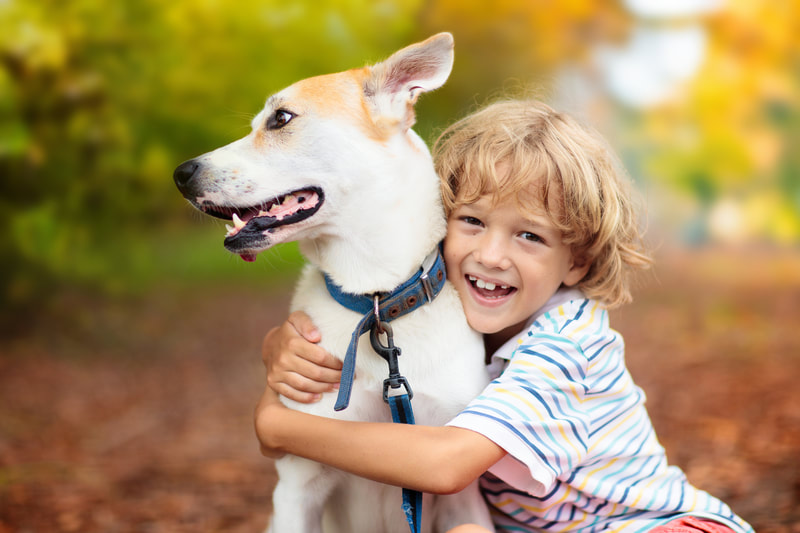
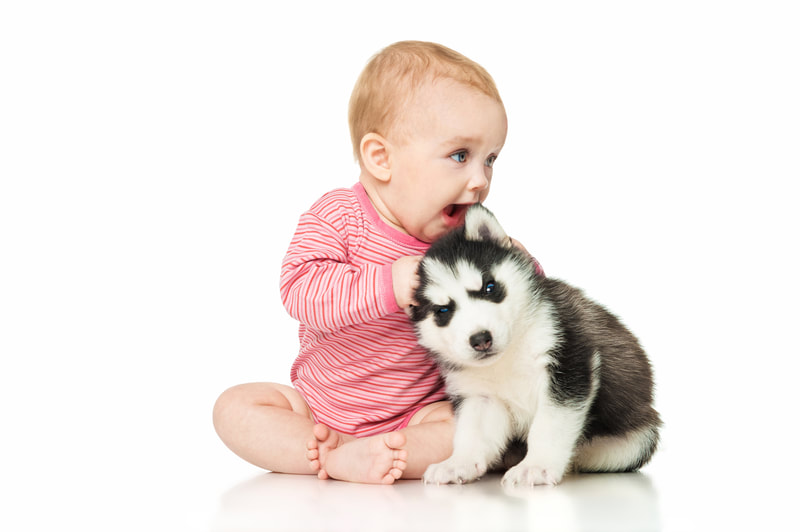
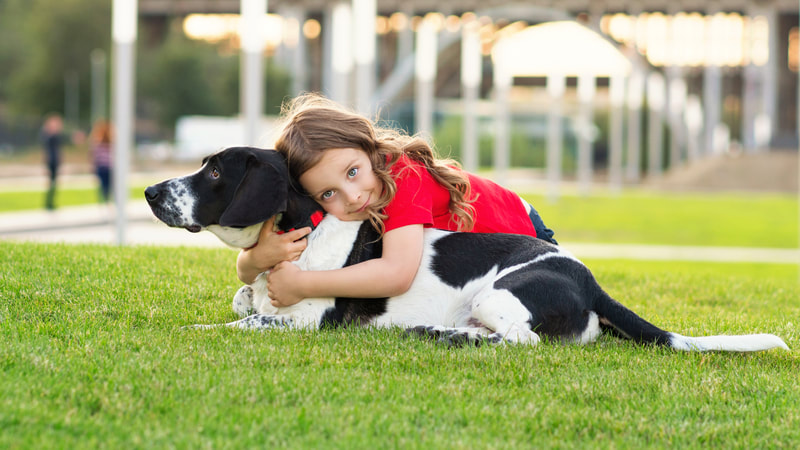
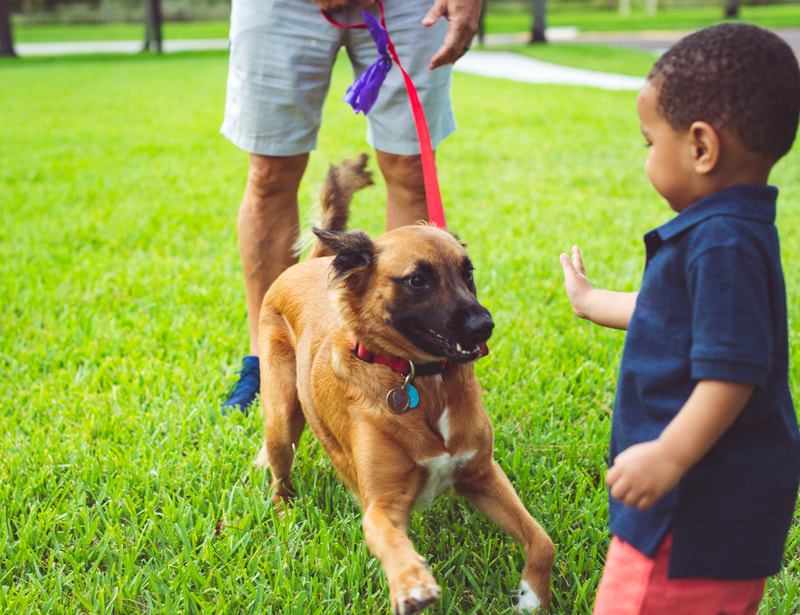
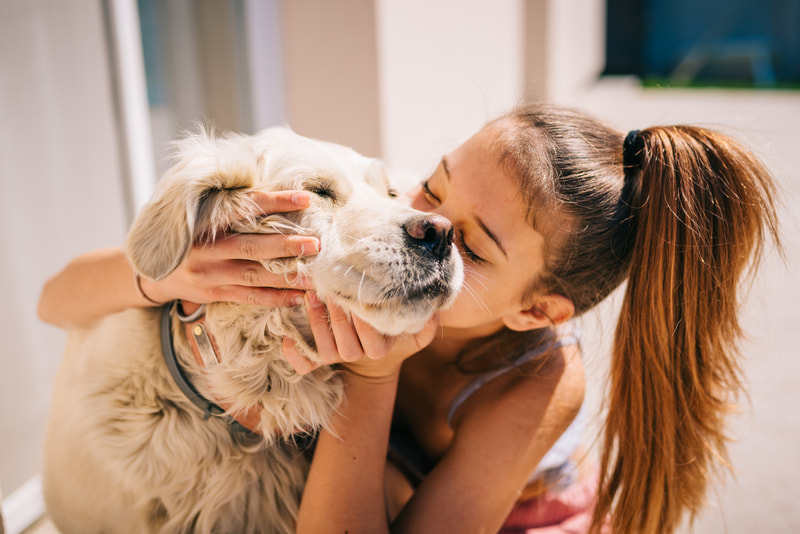
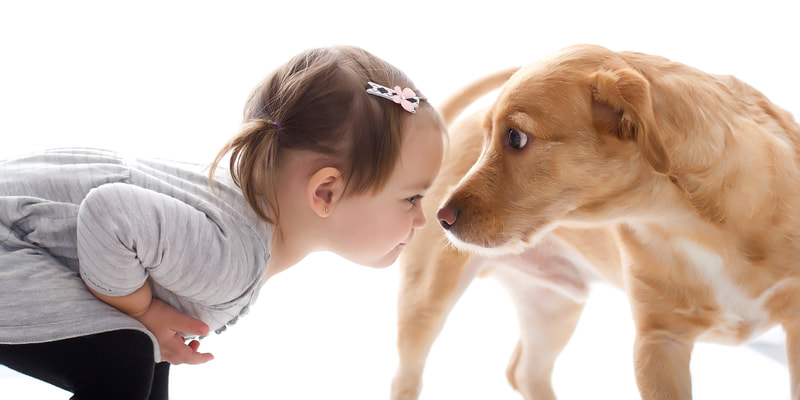
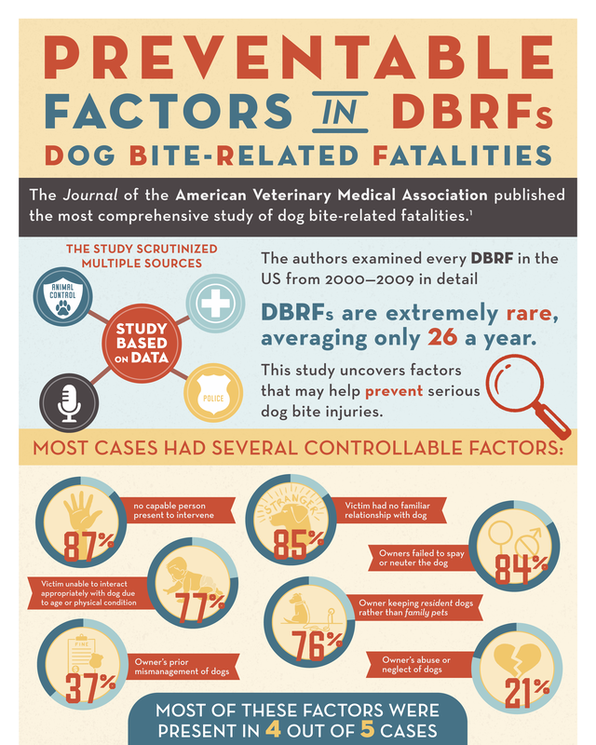

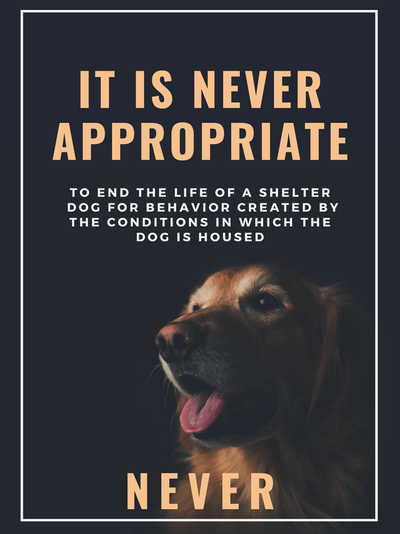

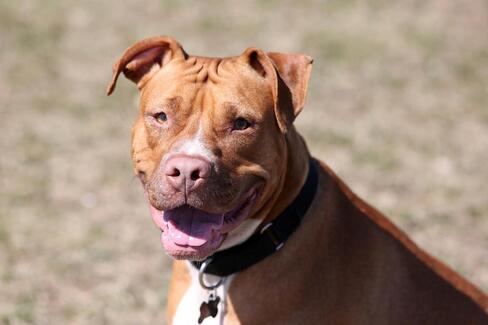


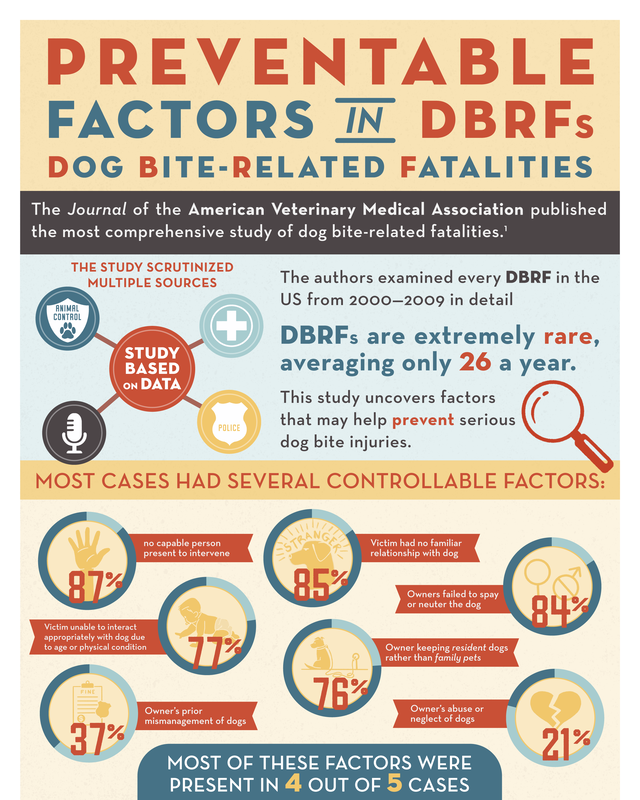
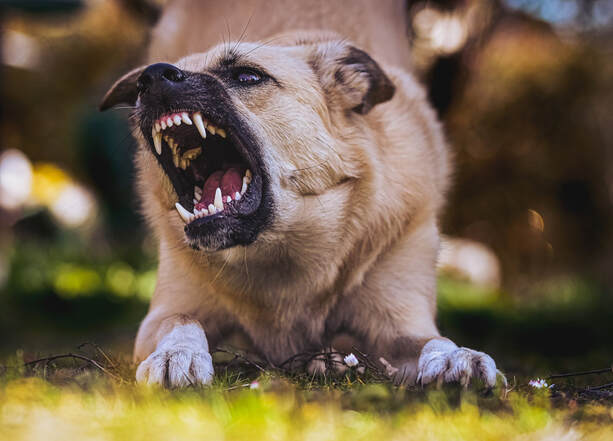
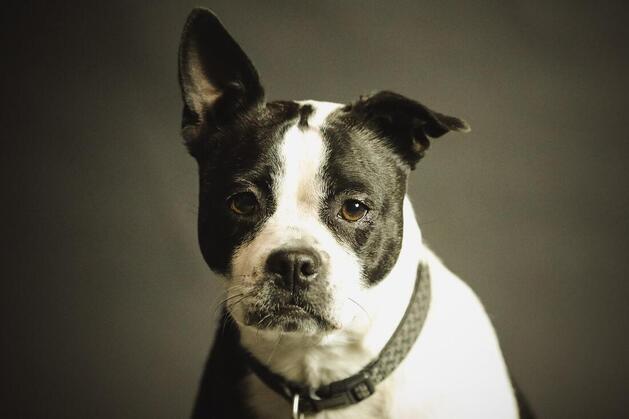

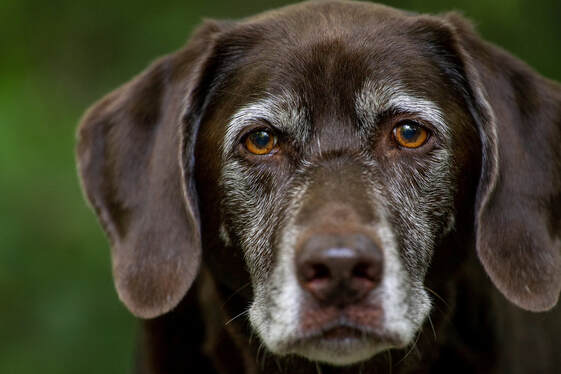
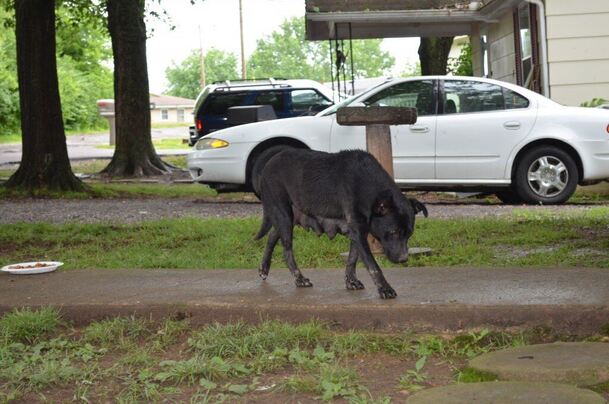
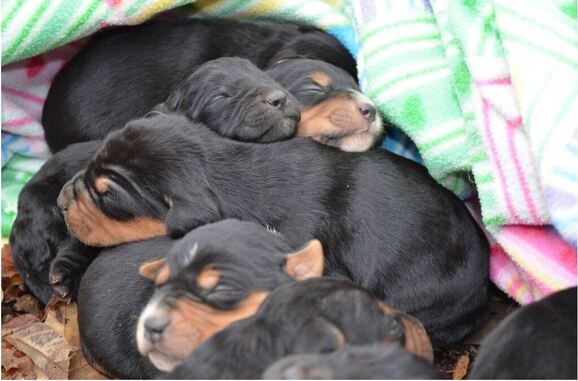
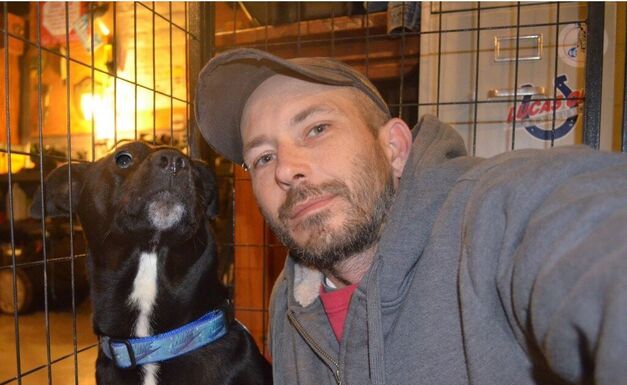
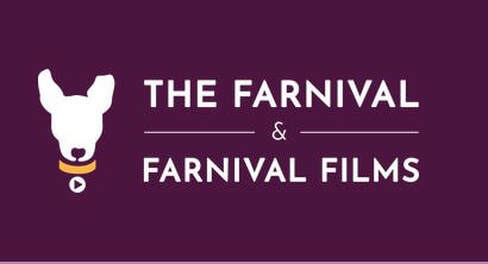

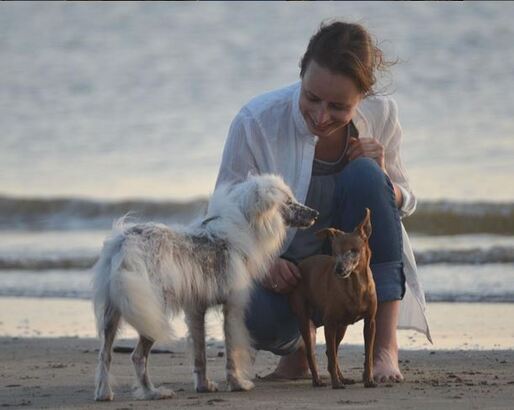
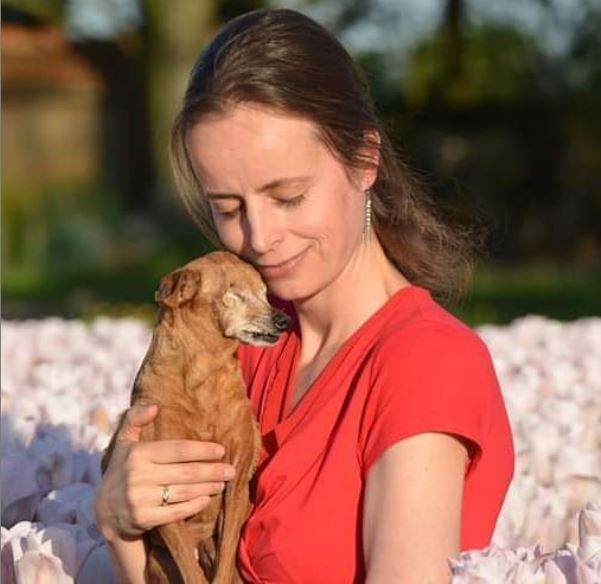

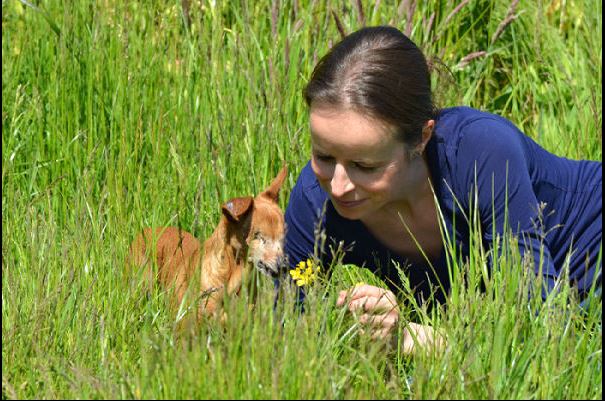
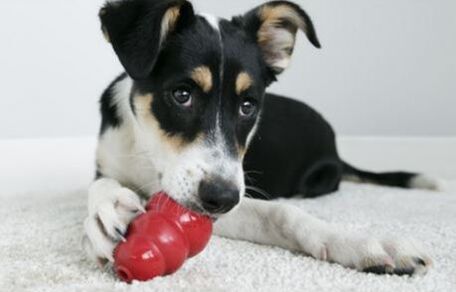
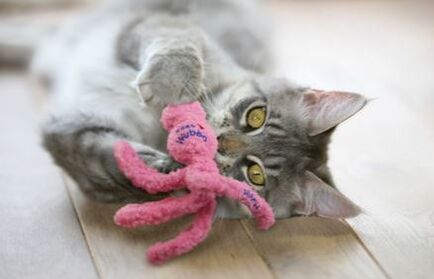
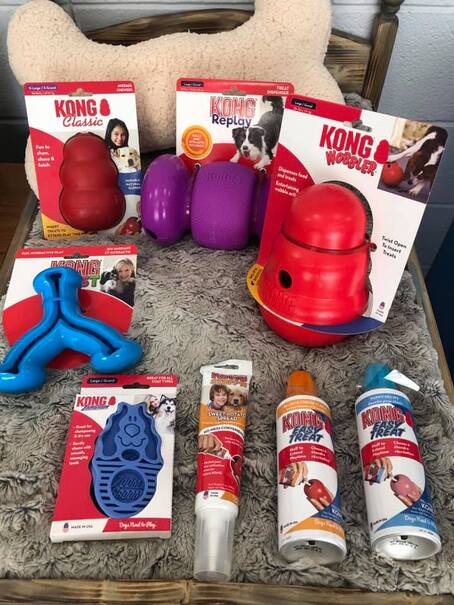
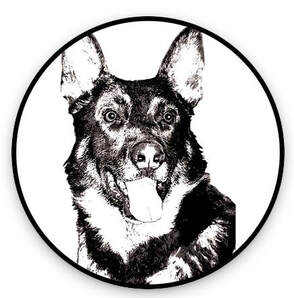

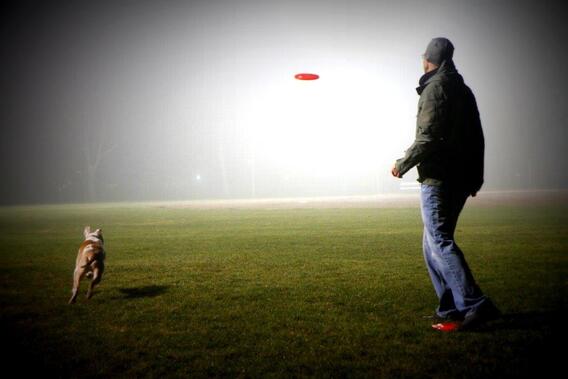
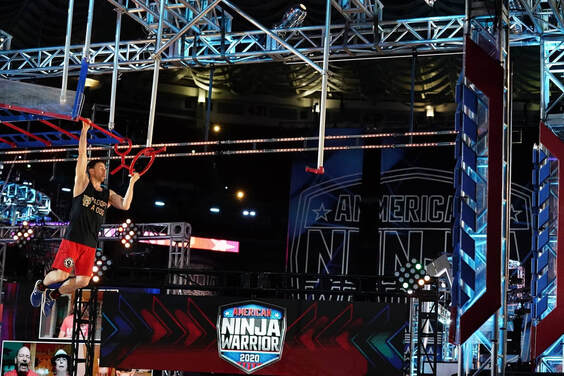
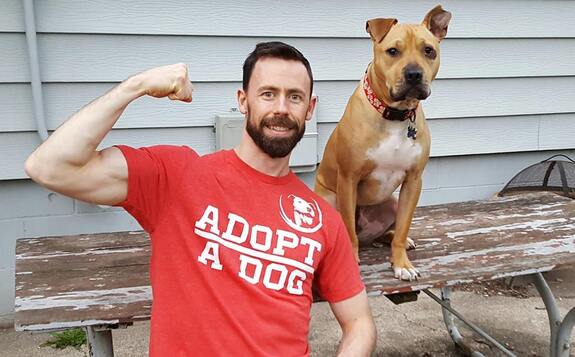
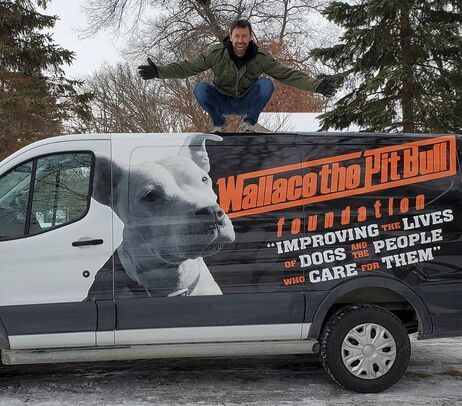
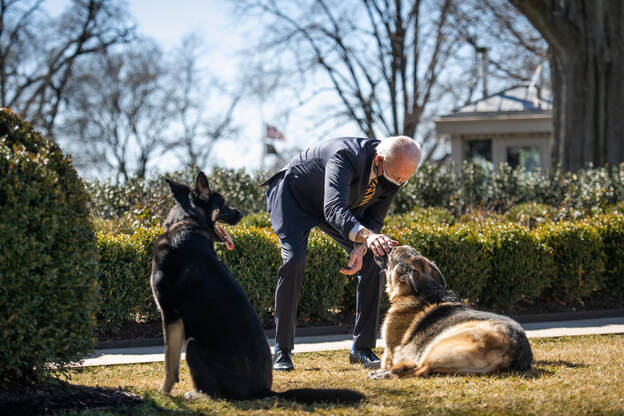
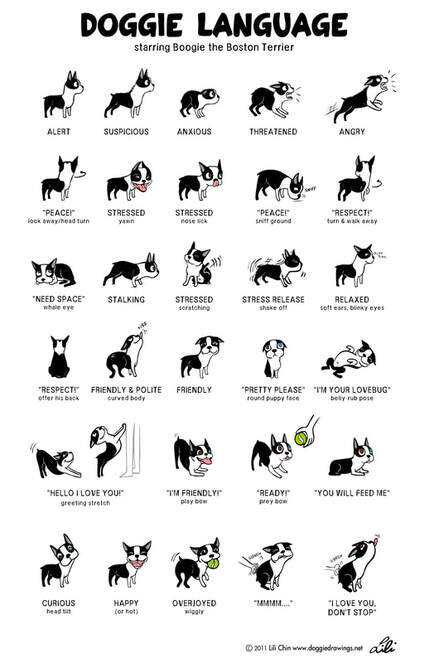
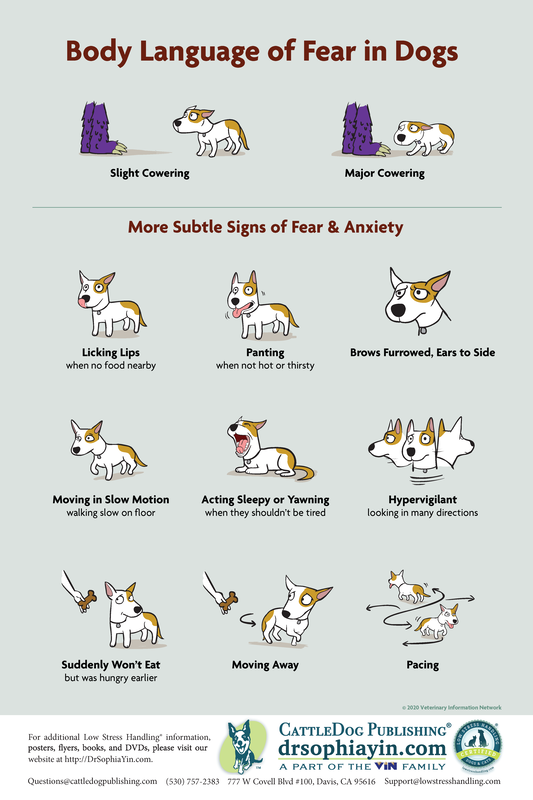
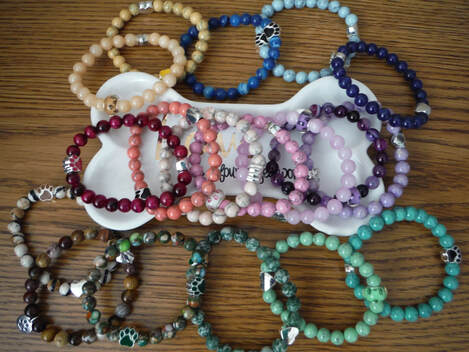
 RSS Feed
RSS Feed